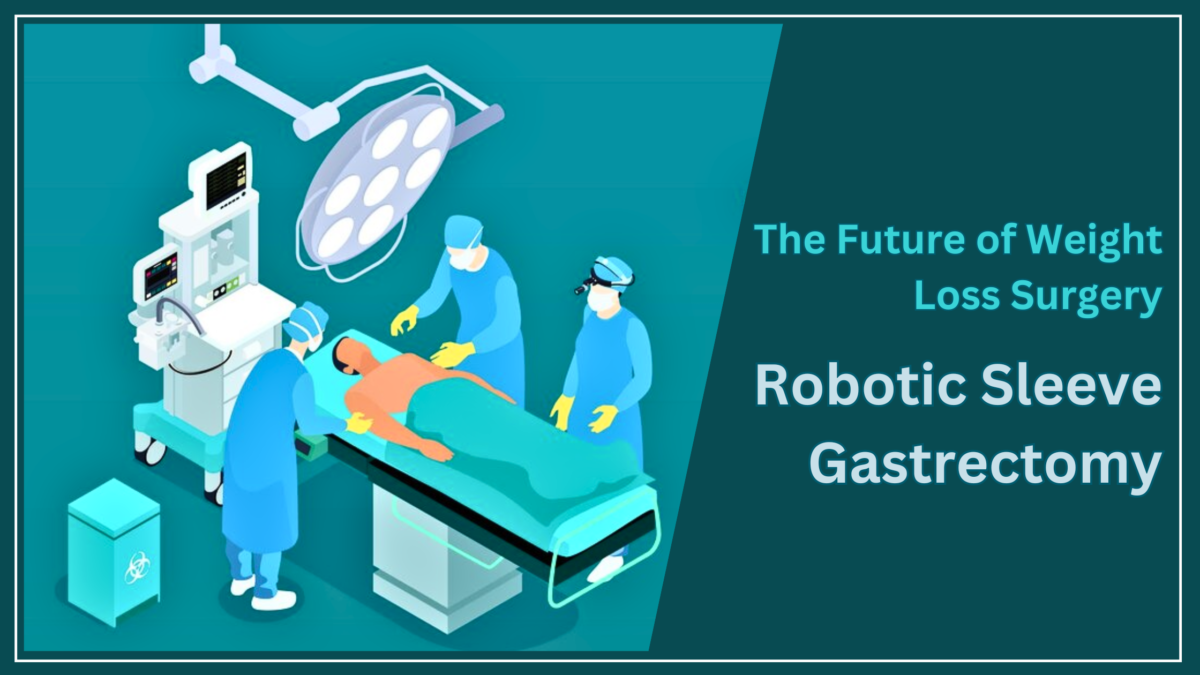The Future of Weight Loss Surgery: Robotic Sleeve Gastrectomy

In recent years, advancements in medical technology have revolutionized the field of bariatric surgery, offering more precise and minimally invasive procedures. One such advancement is robotic sleeve gastrectomy, which combines the benefits of traditional sleeve gastrectomy with robotic-assisted surgical techniques. This blog explores the concept of robotic sleeve gastrectomy, its advantages over traditional methods, and its potential role in the future of weight loss surgery.
Robotic sleeve gastrectomy also known as robot-assisted gastric sleeve surgery represents a significant leap forward in the field of bariatric surgery, promising improved precision, faster recovery times, and potentially better outcomes for patients struggling with obesity. As technology continues to evolve, understanding the implications of robotic-assisted procedures like gastric sleeve surgery is crucial for both patients and healthcare providers.
Robotic Sleeve Gastrectomy: The Basics
Robotic sleeve gastrectomy is a variation of the traditional sleeve gastrectomy procedure, where a large portion of the stomach is surgically removed to create a smaller, sleeve-shaped stomach pouch. What sets this surgery apart is the use of robotic arms controlled by a surgeon, which provide enhanced dexterity, precision, and visualization during the operation.
How Robotic Sleeve Gastrectomy Works
- Procedure Overview: Surgeons operate robotic arms equipped with miniaturized surgical instruments through small incisions in the abdomen.
- Enhanced Visualization: High-definition cameras provide a magnified, 3D view of the surgical site, allowing for better accuracy during tissue manipulation.
- Improved Control: Increased stability and range of motion provided by robotic systems lower the possibility of human error.
Advantages Over Traditional Methods
Robotic sleeve gastrectomy offers several advantages over traditional laparoscopic techniques:
Precision and Accuracy
- Enhanced Precision: Robotic systems allow surgeons to perform complex maneuvers with greater precision, minimizing damage to surrounding tissues.
- Consistent Results: Reduced variability in surgical techniques can lead to more predictable outcomes and improved patient satisfaction.
Faster Recovery and Reduced Complications
- Smaller Incisions: Compared to conventional open surgery, robotic surgery usually involves fewer incisions, which minimises discomfort and scars.
- Quicker Recovery: Patients often experience shorter hospital stays and faster return to normal activities.
Expanded Surgical Capabilities
- Complex Cases: Robotic technology enables surgeons to tackle more complex cases that may be challenging with traditional methods, such as patients with extensive scar tissue or anatomical variations.
Potential Future Developments
Looking ahead, the future of robotic sleeve gastrectomy holds promise for further advancements:
Integration of Artificial Intelligence (AI)
- AI-Assisted Surgery: Integration of AI algorithms could enhance decision-making during surgery, optimizing outcomes based on real-time data and patient-specific factors.
Personalized Medicine
- Precision Medicine Approaches: Tailoring surgical approaches based on genetic, metabolic, and behavioral factors could lead to more personalized and effective treatments for obesity.
Accessibility and Affordability
- Wider Adoption: As technology becomes more mainstream and costs potentially decrease, robotic sleeve gastrectomy may become more accessible to a broader range of patients globally.
Frequently Asked Questions (FAQs)
What is robotic sleeve gastrectomy?
Robotic sleeve gastrectomy is a minimally invasive surgical procedure where a large portion of the stomach is removed to create a smaller, sleeve-shaped stomach pouch. It uses robotic arms controlled by a surgeon to perform the operation with enhanced precision and visualization.
What are the benefits of robotic sleeve gastrectomy over traditional methods?
Robotic sleeve gastrectomy offers advantages such as enhanced precision, reduced risk of complications, smaller incisions leading to faster recovery, and the ability to perform more complex surgical maneuvers. These benefits can result in improved surgical outcomes and patient satisfaction.
Is robotic sleeve gastrectomy suitable for everyone considering weight loss surgery?
Robotic sleeve gastrectomy is typically recommended for individuals who meet specific criteria for bariatric surgery, including a high body mass index (BMI) and obesity-related health conditions. Eligibility is determined based on thorough medical evaluations and discussions with a bariatric surgeon.
How long does recovery take after robotic gastric sleeve surgery?
Recovery times can vary, but patients often experience a quicker recovery compared to traditional open surgery. Most patients can return to normal activities within a few weeks, with full recovery and adaptation to new eating habits occurring over several months.
Is robotic gastric sleeve surgery covered by insurance?
Coverage for robotic gastric sleeve surgery may vary depending on insurance providers and specific policy terms. It’s important to consult with both the bariatric surgery center and insurance company to understand coverage options and potential out-of-pocket costs.
How does robotic technology benefit bariatric surgery in general?
Robotic technology enhances bariatric surgery by providing surgeons with improved visualization, dexterity, and control during complex procedures like gastric sleeve surgery. This can lead to more precise surgical outcomes and potentially shorter recovery times for patients.
Also Read: Overcoming Insomnia: Practical Methods for Improved Sleep
Conclusion
Robotic sleeve gastrectomy represents a transformative approach to weight loss surgery, leveraging cutting-edge technology to improve patient outcomes and surgical precision. As advancements continue to unfold, it’s essential for healthcare providers and patients alike to stay informed about these innovations and their potential impact on the future of obesity treatment.







